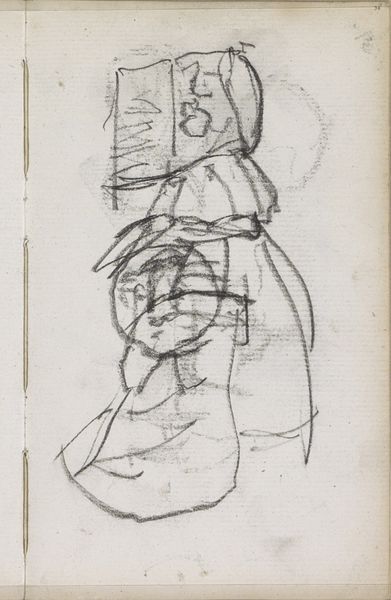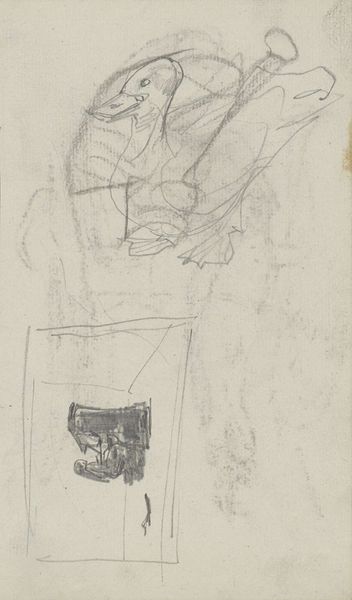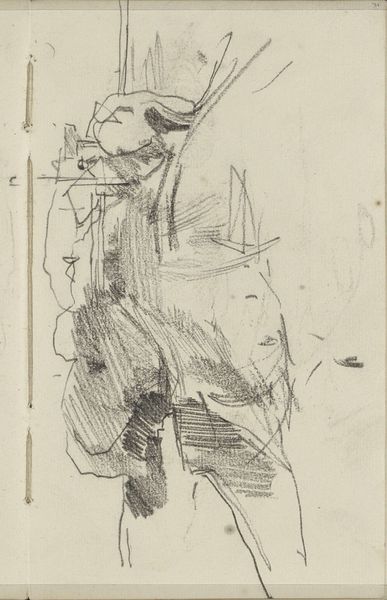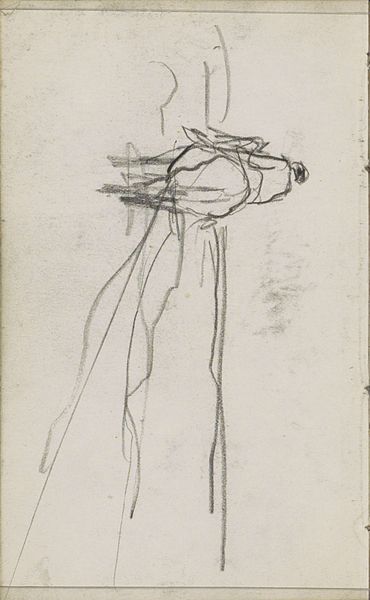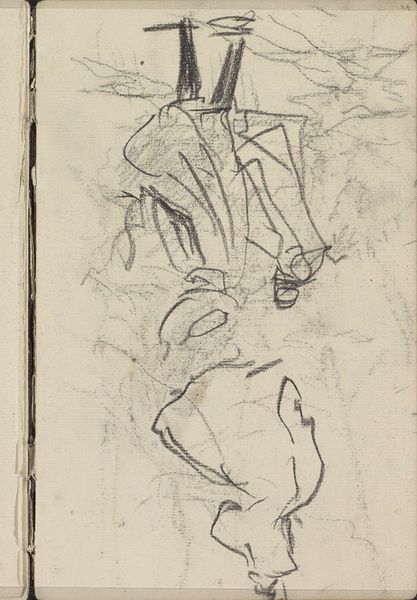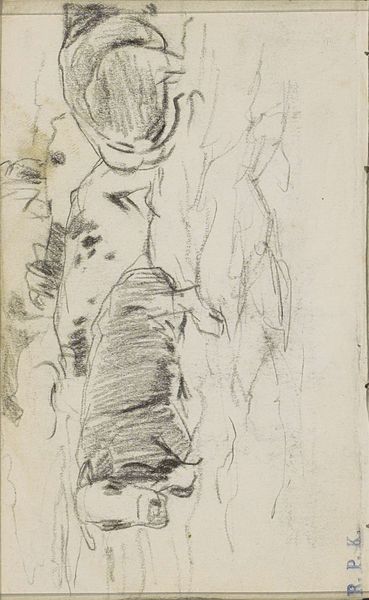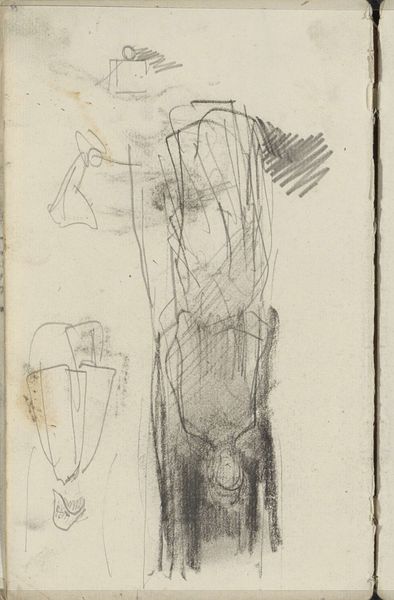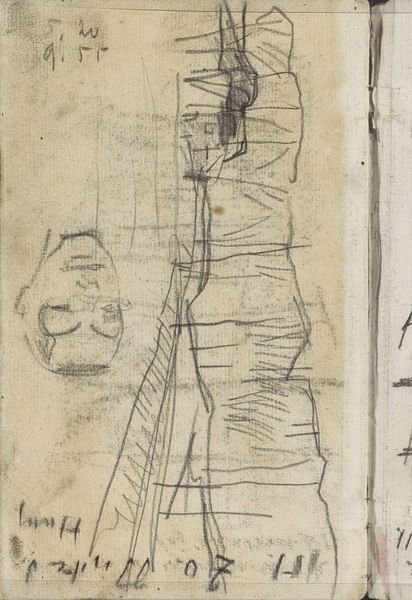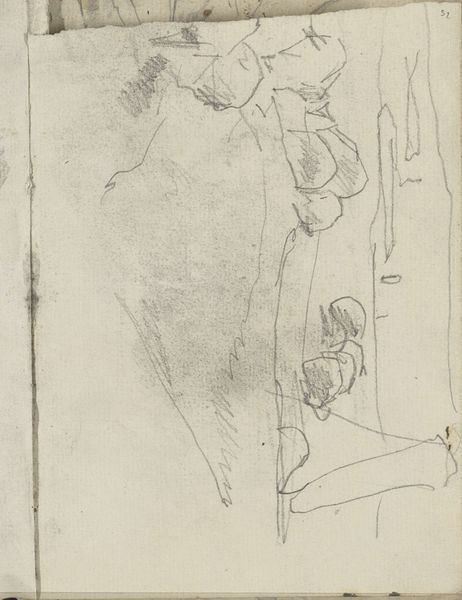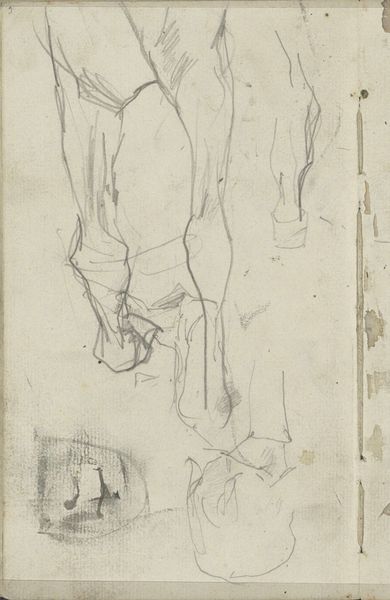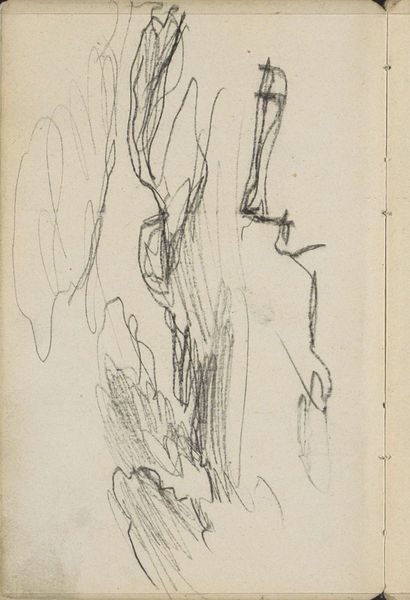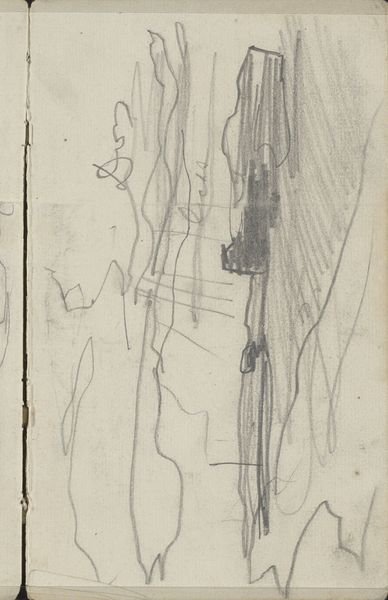
drawing, pencil
#
portrait
#
drawing
#
impressionism
#
figuration
#
pencil
#
realism
Copyright: Rijks Museum: Open Domain
Curator: "Figuurstudies," or Figure Studies, made with pencil around 1882 by George Hendrik Breitner, and currently residing at the Rijksmuseum, strikes me as surprisingly intimate for a collection of sketches. Editor: I see what you mean. The delicate lines give it an ephemeral, almost ghostly quality. Like looking at a fleeting memory. There is an undeniable lightness, but it leaves you wondering if Breitner found his subjects during fleeting moments. Curator: It's likely these were rapid studies, part of Breitner's broader investigation into urban life and figuration, and its social strata. Notice how he quickly captures the essence of these figures: their posture, their attire... even the implied social status seems to be present within just a few strokes. He isn't only showing, he is telling. Editor: Exactly, it does read like an attempt to almost capture something real from a situation he knows. It's interesting how economical his lines are. There's an honesty here – no attempts to prettify or idealize the subjects. These are everyday people, rendered with a refreshing directness. In comparison to other drawings with complete details, this has a raw immediacy. Curator: The materiality of the work itself is important, too. Breitner has worked out these studies on paper, and a basic pencil--accessible and widely used material reflective of the industrialized era he occupied. Such accessibility to create artwork defied the conventional perception of art during that era and offered different classes of people to depict the changes in society and in the everyday that reflected his position. It makes the images seem like a direct product of a certain culture. Editor: I agree, the choice of medium really amplifies the sense of everyday reality. Thinking of what that reality involved adds to the impact: he gives an ode to the human in an inhuman age. Almost like these fragile outlines were protesting something bigger... and the method of using the paper almost shows this too. Curator: Precisely. There is the juxtaposition of accessible materials with high aesthetic merit... which leads us to further examine how such artwork affected those who consumed the products made from the very fabric of those he represented. It creates awareness. Editor: Absolutely. So, "Figuurstudies," despite its lightness and seeming simplicity, really opens a whole vista on the intersection of art, labor, and life. Curator: And reminds us that art can come from anywhere and anyone. Editor: Well said.
Comments
No comments
Be the first to comment and join the conversation on the ultimate creative platform.

